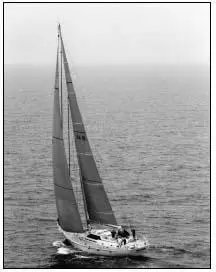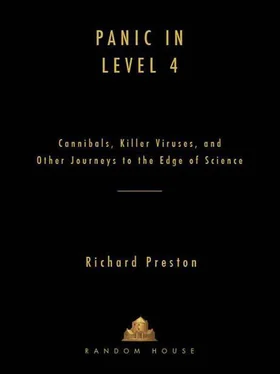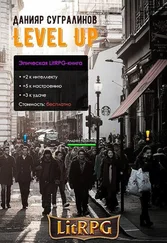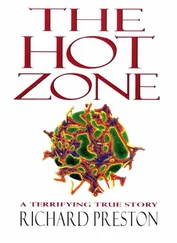Seawater is loaded with viruses, bacteria, and single-celled organisms. Therefore it’s a soup with DNA floating around in it. The samples of seawater were run through DNA-sequencing machines, and the resulting fragments of DNA code were assembled in a supercomputer that looked for patterns. Venter was probing the sea, the heart of the earth’s ecosystems, for undiscovered genes. To the great surprise of biologists, Venter’s expedition revealed that the oceans are filled with millions of distinctly different and previously unknown species of microorganisms. The sea contained a vast, almost incalculable number of unknown life-forms, invisible to the eye. Especially viruses. The oceans of the earth appeared to contain perhaps a hundred million different kinds of viruses, virtually none of which were known to science, as well as countless millions of species of bacteria and single-celled organisms that had never been seen before.
Meanwhile, Craig Venter and Claire Fraser, who was the head of TIGR, had a divergence in their love lives and got divorced. Fraser left TIGR and moved to the University of Maryland, and eventually TIGR was merged into the J. Craig Venter Institute. This institute became a respected force in genomics. It had five hundred employees. Many of them, including Hamilton Smith, had exited from Celera en masse to follow Venter wherever he went.
Craig Venter had never given up sequencing the human genome. In the fall of 2007, he published a superaccurate and complete version of his own genome. Craig Venter’s genome had both sets of chromosomes in it (humans have a double set of chromosomes in each cell). This was a so-called diploid human genome, and it had more than six billion letters in it. It was twice as long as the Human Genome Project’s human genome. Craig Venter’s genome was the most finished, accurate, complete image of the human DNA that will likely be published.

Craig Venter’s yacht Sorcerer II , sailing to windward in search of unknown genes.
Courtesy of the J. Craig Venter Institute
He made his entire DNA code available for free on the Internet, as well. Thus anyone who wanted to know how Craig Venter, as an example of the human species, was constructed could read his blueprint on the Web site. The government may have thought it was only cruising, but Venter had never stopped racing.
* * *
CRAIG VENTER’S latest project was to create life in a test tube. He called it synthetic biology. The leader of the synthetic biology effort at at the J. Craig Venter Institute was Hamilton Smith. Smith, who had made and lost millions in the Celera venture, had finally sold his ’83 Mercury Marquis and replaced it with a white Cadillac. Now Smith, Venter, and their colleagues were creating artificial genes—making stretches of DNA in the laboratory, rather like typing words with a typewriter. They were putting the machine-made DNA into bacteria. Their goal was to create synthetic organisms, microbes made by man to serve man. These laboratory-made bacteria, Venter and Smith hoped, would be able to digest cellulose plant material, such as in grass and pulpwood, ultimately turning it into ethanol, which could be used to power automobiles in place of gasoline.
Venter had founded a private company—for profit—called Synthetic Genomics. “We have some major deals with companies, such as one with BP [British Petroleum] to develop synthetic bacteria that would metabolize coal and turn it into natural gas,” he said. “We’re developing bacteria that can convert carbon dioxide that’s been sequestered from the burning of coal and turn it into methane [for use in natural gas]. We’ve engineered a cell line”—a strain of living cells—“that could produce a new biological fuel that would replace jet fuel,” he said. In this way, Craig Venter and Hamilton Smith hoped to help reduce global climate change while getting rid of America’s dependence on foreign oil, all made possible by advances in the reading and writing of DNA. Along the way, Venter and his colleagues decoded the DNA of the dog. The dog DNA came from Shadow, one of Craig Venter and Claire Fraser’s poodles. The last I heard, Shadow was living with Claire and doing fine. “I have visitation privileges with Shadow but see him rarely,” Venter said.
IN 1998, THE CLOISTERS—the museum of medieval art in upper Manhattan—began a renovation of the room where the seven tapestries known as The Hunt of the Unicorn hang. The Unicorn Tapestries are considered by many to be the most beautiful tapestries in existence. They are also among the great works of art of any kind. In the tapestries, richly dressed noblemen, accompanied by hunters and hounds, pursue a unicorn through forested landscapes. They find the animal, appear to kill it, and bring it back to a castle; in the last and most famous panel, “The Unicorn in Captivity,” the unicorn is shown bloody but alive, chained to a tree surrounded by a circular fence, in a field of flowers. The tapestries are twelve feet tall and up to fourteen feet wide (except for one, which is in fragments). They were woven from threads of dyed wool and silk—some of them gilded or wrapped in silver—around 1500, probably in Brussels or Liège, for an unknown person or persons, and for an unknown reason—possibly to honor a wedding. A monogram made from the letters A and E is woven into the scenery in many places; no one knows what it stands for. The tapestries’ meaning is mysterious; the unicorn was a symbol of many things in the Middle Ages: Christianity, immortality, wisdom, lovers, marriage.
For centuries, the Unicorn Tapestries were in the possession of the La Rochefoucauld family of France; they hung in the family’s château in Verteuil, a town in Charente, north of Bordeaux. François, the sixth duc de La Rochefoucauld (1613–1680) was a famed author of maxims. Among them is this one: “There is something in the misfortune of our friends that does not displease us.”
In 1789, during the French Revolution, a mob of peasants looted the La Rochefoucauld château while the family fled. The family eventually returned to the château, but the Unicorn Tapestries had disappeared. Two generations later, in 1855, the then duc de La Rochefoucauld sent word around town that he’d like to buy the Unicorn Tapestries from anyone who might still have them. Some local farming people came forward and sold the tapestries back to the family. It turned out that the farmers had been using the Unicorn Tapestries to cover heaps of potatoes inside barns and to wrap fruit trees during the winter to keep them from freezing. Nevertheless, the tapestries were still in good shape. In the early 1920s, the La Rochefoucauld family, needing money, put the tapestries on display with an art dealer in Paris, and in 1922, John D. Rockefeller, Jr., bought them for just over a million dollars. He kept them in his apartment on Fifth Avenue, and in 1937 he gave them to the Cloisters. Their monetary value today is incalculable.
As the construction work at the Cloisters got under way, the tapestries were rolled up and moved, in an unmarked vehicle and under conditions of high security, to the Metropolitan Museum of Art, which owns the Cloisters. They ended up in a windowless room in the museum’s textile department for cleaning and repair. The room has white walls and a white tiled floor with a drain running along one side. It is exceedingly clean and looks like an operating room. It is known as the wet lab, and is situated on a basement level below the museum’s central staircase.
Читать дальше









![Shin_Stark - В подземелье я пойду, там свой level подниму X [СИ]](/books/384602/shin-stark-v-podzemele-ya-pojdu-tam-svoj-level-po-thumb.webp)



